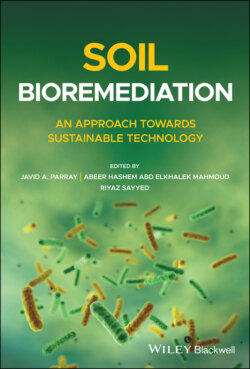Читать книгу Soil Bioremediation - Группа авторов - Страница 42
2.8.1 Advantages of Phytoremediation
Оглавление1 It is a clean‐up technology, cost‐effective, esthetically pleasing, and environmentally friendly.
2 It has a high probability of public acceptance.
3 It may reduce the entry of contaminants into the environment by preventing their leakage into groundwater systems.
4 It may be used on a larger scale to clean‐up a diversity of contaminants, which is possible with other approaches.
5 Environmental disruption is negligible, and it preserves topsoil in in‐situ treatment.
6 Plants act as soil stabilizers, which minimizes the grasshopper effect, and prevents contaminants from spreading in their surrounding environment.
7 It has the potential to treat a wide‐range of hazardous pollutants in the environment.
8 Sites can be monitored easily with the naked eye.
9 Additional advantages of phytoremediation over bioremediation, physio‐chemical and engineering methods include the production of useful byproducts, such as bioenergy or wood pulp.
10 Phytoremediation also supports bioremediation because plants supply nutrients and provide protection for rhizospheric microorganisms, which promotes remediation of pollutants. Additionally, the plants that are grown during phytoremediation provide stabilization of the soil and could potentially be used for green energy purposes.
11 Lessens the amount of landfill waste further (up to 90%), which can be further used as bio‐ore of heavy metals.
